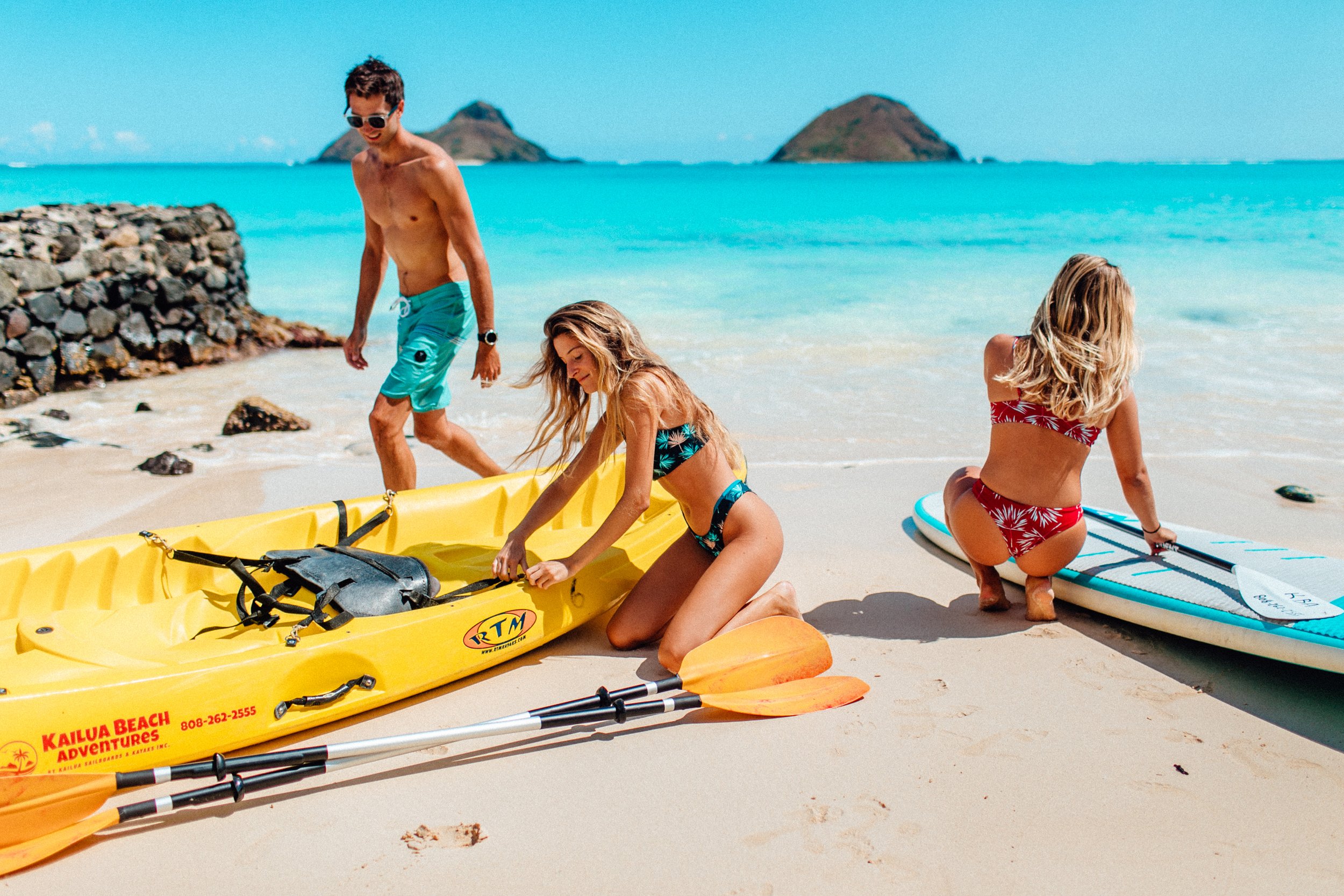Paddle boarding and kayaking have become incredibly popular over the past few years. And for good reason - they are a lot of fun! Ocean kayaking in particular gives you great views, some good exercise, and plenty of waters and coastlines to explore. In this guide, we will cover not only the difference between ocean and lake kayaking but everything you need to know to get started with your ocean kayaking adventures!
Getting Started With Ocean Kayaking
If you're a beginner at kayaking, you'll want to start with the basics. Here's everything you need to know about ocean kayaking, from the gear you'll need to the different types of kayaks.
The Gear
When it comes to kayaking, you'll only need a few items to get going: a kayak, a paddle, and a life jacket. If you are interested in kayaking the ocean but don't yet have a kayak of your own make sure to check out some rental options to get you started.
Different Types of Kayaks
There are two different categories of kayaks for ocean kayaking that you can use: sit-on kayaks and sit-in kayaks. Sit-on-top kayaks are great for beginners because they're easy to get in and out of, and they offer plenty of storage space for your gear. Closed-deck or sit-in kayaks, on the other hand, provide more protection from the elements and are better suited for colder weather kayaking.
Choosing A Location
Kayaking is all about exploring and enjoying nature as you glide across the water. When it comes to choosing a location, there are a few things you'll want to keep in mind.
Check The Weather Conditions Ahead Of Time. Ocean kayaking is supposed to be an enjoyable experience. Make sure that you won't be battling against high winds or waves on the day that you choose to go out.
Familiarize Yourself With The Area. Not all coastline is the same, and some areas will have more rocks or currents than others. It's always best to do your research ahead of time or even better get in touch with a local guide and enhance your adventure with a guided tour of the area. You may even learn some new information along the way!
Keep Your Skill Level In Mind. While an experienced ocean kayaker might like catching a wave or two along the trip, if you're a beginner, you may want to stick to calmer waters. A reef-protected bay like Kailua Beach is the perfect option for someone just getting started.
Ocean Kayaking Techniques
Once you have all of your gear and you've chosen your location, it's time to hit the water! Here are a few ocean kayaking tips and techniques to help make your experience even better.
Paddle With The Waves, Not Against Them. One of the most important things to remember when kayaking in the ocean is to paddle with the waves. Paddling against the waves will only make your trip more difficult and tiring.
Maintain Good Posture. Just like when you're sitting in a chair, it's important to maintain good posture when kayaking. This will help you stay balanced and make it easier to paddle. Plus, your back with thank you later!
Use Your Core. In addition to good posture, using your core muscles will also help you paddle more efficiently. Sit up tall and engage your abs as you paddle.
Practice Turning Your Kayak. Turning can be tricky, especially in the ocean where there are waves and currents. The best way to practice is in a calm body of water.
Launching In Surf. If you happen to be launching your kayak in a surf zone, make sure to choose a spot where the waves are breaking at waist level or below. Paddle out to the zone and then wait for a small wave to come in before paddling over it. As you paddle over the wave, lean back slightly to help your kayak rise up and over the top.
Safety Considerations
As with any water sport, safety should always be your number one priority when ocean kayaking. Safety considerations mostly boil down to:
Know The Area. Which includes directions, start and stop points of your trip, the weather, and the water conditions.
Wear Safety Gear. Even if you're a great swimmer it's always best to make sure you have personal flotation equipment available. Especially when kayaking on the ocean a life jacket can make a big difference in an emergency.
Bring A Friend. Not only is kayaking with a friend more fun, but it's also safer as well. If one kayaker gets into trouble, the other can come to their aid.
In case of an emergency always remember to call for help.
By following these tips, you'll be sure to have a safe and enjoyable ocean kayaking experience! So what are you waiting for? Get out there and explore!
Bonus: Buying An Ocean Kayak
If you've kayaked on the ocean before, the odds are you're now hooked and may be considering getting a kayak for constant time out on the water. Here's what you should look for when buying an ocean kayak.
Stability. When paddling in the ocean, you're likely to encounter waves and chop. A stable kayak will help you feel more comfortable and make it easier to paddle.
Maneuverability. While stability is important, so is maneuverability. You'll want a kayak that's easy to turn, especially if you're paddling in tight spots.
Speed. If you plan on doing any ocean racing or long-distance paddling, speed is an important factor to consider.
Material. The material your kayak is made of will affect its durability and how it handles the water. For example, a plastic kayak will be more durable than a fiberglass kayak but not as fast.
Once you've considered all of these factors, you'll be able to choose the perfect ocean kayak for your needs! And then it's time to get back out there and enjoy the water!

